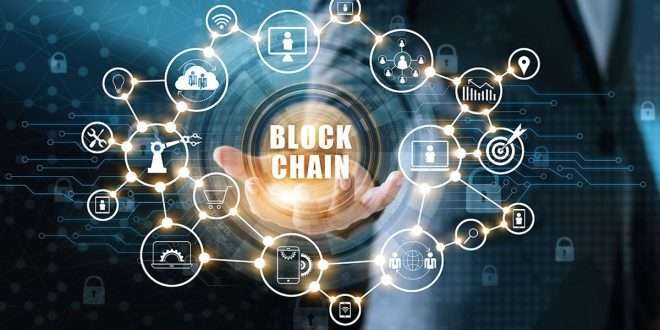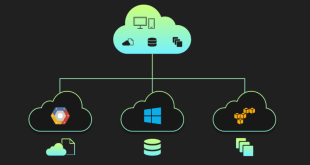In recent years, the world of technology has witnessed groundbreaking innovations that have transformed the way we interact with data and conduct transactions. Two such cutting-edge technologies, blockchain, and serverless computing, have emerged as game-changers in their respective domains. But what happens when these two revolutionary technologies converge? The result is a potent combination that paves the way for decentralized and trustworthy computing.
Understanding Serverless Computing and its Advantages
Before delving into the integration of blockchain and serverless architectures, let’s take a moment to understand what serverless computing entails. In a traditional server-based model, developers need to manage servers and infrastructure to run applications. However, serverless computing eliminates the need for server management. Instead, developers focus solely on writing code, and the cloud provider takes care of the rest.
The advantages of serverless computing are manifold:
- Scalability: Applications can automatically scale up or down based on demand, ensuring efficient resource utilization.
- Cost-Effectiveness: With serverless, you pay only for the computing resources used during the execution of functions, leading to cost savings.
- Faster Deployment: Serverless architectures enable rapid deployment, reducing time-to-market for applications.
Unraveling the Essence of Blockchain Technology
Blockchain, on the other hand, is the underlying technology behind cryptocurrencies like Bitcoin. It is a distributed ledger that records transactions in a secure and immutable manner. In essence, a blockchain is a chain of blocks, where each block contains a list of transactions, and once added to the chain, it cannot be altered.
Key attributes of blockchain technology include:
- Decentralization: Blockchain operates on a decentralized network, eliminating the need for a central authority.
- Transparency and Immutability: Every transaction on the blockchain is visible to all participants, and once recorded, it cannot be modified.
- Enhanced Security: The cryptographic nature of blockchain ensures that data is secure and tamper-proof.
The Synergy: Blockchain Integration in Serverless Architectures
Now, let’s explore the fascinating integration of blockchain technology in serverless architectures. By combining the benefits of serverless computing with the inherent features of blockchain, we unlock a plethora of possibilities.
Enhanced Security and Trust: The immutable nature of blockchain ensures that data stored in serverless applications remains tamper-proof and trustworthy. This instills confidence in users, making the system more reliable.
Decentralized Applications (DApps): By integrating blockchain into serverless computing, developers can build decentralized applications (DApps). These DApps leverage the decentralized nature of blockchain to operate without a single point of failure, making them more robust and resilient.
Smart Contracts: Smart contracts, self-executing contracts with the terms of the agreement written directly into code, can be seamlessly integrated into serverless applications through blockchain. This facilitates automated and trustless transactions, streamlining various business processes.
Data Provenance and Transparency: Blockchain integration enables better data provenance, ensuring that the origin and history of data are transparent and verifiable. This is particularly crucial in industries like supply chain management and healthcare.
Overcoming Challenges in Blockchain-Serverless Integration (H2)
While the integration of blockchain and serverless computing presents immense potential, it also comes with certain challenges.
Latency and Performance: The decentralized nature of blockchain can introduce latency in serverless applications. Developers must carefully optimize performance to strike the right balance.
Data Storage Costs: Storing data on the blockchain can be expensive, especially for applications with large volumes of data. Employing cost-effective data management strategies is essential.
Future Prospects of Decentralized and Trustworthy Computing
The amalgamation of blockchain and serverless computing opens up new frontiers in the world of technology. As this integration evolves, we can expect to witness several advancements:
- Mass Adoption of DApps: Decentralized applications are poised to gain traction in various industries, reshaping how businesses interact with customers and partners.
- Interoperability and Standardization: Efforts are underway to achieve interoperability and standardization among different blockchain platforms, making it easier to integrate them with serverless architectures.
- Improved Scalability: Innovations in both blockchain and serverless technologies will lead to improved scalability, ensuring seamless operations even under high loads.
Final Words
The convergence of blockchain and serverless computing heralds a new era of decentralized and trustworthy computing. This potent combination promises enhanced security, transparency, and efficiency in various domains. As we journey into the future, the integration of these revolutionary technologies will continue to shape the digital landscape, unlocking endless possibilities for innovation.
Commonly Asked Questions
Q1: What is serverless computing?
A1: Serverless computing is a cloud computing model where developers focus solely on writing code, and the cloud provider handles server management and scaling.
Q2: How does blockchain ensure data security?
A2: Blockchain employs cryptographic techniques to secure data, making it tamper-proof and transparent.
Q3: What are DApps, and how do they benefit from blockchain-serverless integration?
A3: DApps are decentralized applications that operate without a central authority. Blockchain-serverless integration enhances their robustness and resilience.
Q4: Are there any challenges in integrating blockchain and serverless computing?
A4: Yes, challenges include latency, performance optimization, and data storage costs.
Q5: What does the future hold for this integration?
A5: The future promises widespread adoption of DApps, improved scalability, and efforts towards interoperability among blockchain platforms.
 webfily
webfily



